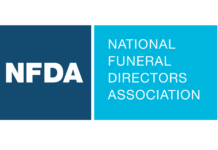By Leader Contributor Alexandra Jo, Culture and Content Manager at Parting Stone
Creating an open, supportive, and safe work environment for all employees is important in any professional field, and research shows that failing to do so for LGBTQIA+ professionals can have negative repercussions for businesses.
Even though the large population of queer people in deathcare may not be a frequent topic of conversation in this industry, there is data available which proves the reality of high numbers of queer death professionals. It’s important for funeral businesses to understand that when LGBTQIA+ employees feel safe to be their whole selves and are supported at work, we are more likely to perform better, have fewer mental health issues, and stay at a job longer. Thus, cultivating a safe and equitable workplace for LGBTQIA+ deathcare professionals is an important step for every funeral business to take.
Even in an age of momentous progress, a large majority of LGBTQIA+ Americans still experience discrimination in both their professional and personal lives. LGBTQIA+ deathcare professionals should feel safe and supported at work, and with growing rates of LGBTQIA+ identifying individuals in general, the grieving families that funeral professionals serve should also be treated with dignity and respect in all aspects of our businesses, regardless of gender identity or sexual orientation. Creating a more equitable work environment is good for the people you employ, the families you serve, and the future of your business.
The Facts: Research and LGBTQIA+ Deathcare Professionals
Statistics show that deathcare is one of the most common jobs among the LGBTQIA+ (Lesbian, Bisexual, Gay, Transgender, Queer, Intersex, Asexual, plus) population. “Mortician/Undertaker/Funeral Director” is ranked #11 on this list of “Occupations with the Highest Joint Proportion of Gay and Lesbian Workers.” Along with proving that LGBTQIA+ people commonly choose careers in deathcare, the data collected in a study and accompanying article in Administrative Science Quarterly called “Concealable Stigma and Occupational Segregation: Toward a Theory of Gay and Lesbian Occupations” also explains why deathcare is such an appealing space for queer folks. LGBTQIA+ workers seek out jobs that allow them to work more independently (though not necessarily alone) and jobs that require a higher level of social perceptiveness. Funeral Director falls in the category of jobs requiring a high degree of social perceptiveness because of the acute emotional intelligence that is required to deal with death, loss, and grieving families directly day-to-day.
The most obvious answer to the question of why there isn’t a wider knowledge about the high population of LGBTQIA+ funeral professionals is that many queer individuals are not willing or able to be “out” at work. However, research shows that employees who feel safe to come out completely at work are happier, more productive, and more likely to stay with a company long-term. When your employees feel safe to bring their whole selves to work, especially in a demanding profession like deathcare, they are happier, do better work, and add more value to your company.
To help educate your staff about maintaining a supportive professional space for LGBTQIA+ staff, we’ve created a sharable PDF eBook called “How to Make Your Deathcare Workplace LGBTQIA+ Friendly” that you can easily email to your team. Click below to download the free ready-to-share eBook:
If you’re ready to make your funeral home more equitable, use the following actions to cultivate a safe and supportive work environment for LGBTQIA+ deathcare professionals and the families that you serve:
1) Create a culture of acceptance
An environment that is insensitive to LGBTQIA+ deathcare professionals could mean more employee turnover and higher overall job dissatisfaction amongst your staff. According to this article, a survey conducted by the Williams Institute revealed that LGBT employees who spend considerable time and effort hiding their identity in the workplace, experience higher levels of stress and anxiety resulting in health problems and work-related complaints. Similarly, a recent article in Harvard Business Review explains that: “when workers can bring their authentic selves to work, they are more productive and engaged. Research shows that coming out increases job satisfaction, intention to stay, and emotional support from co-workers, whereas staying “in the closet” has costs — both for the individual and the company[…] Our research reveals that people who are able to come out at work are happier.”
Follow these steps toward creating a more inclusive and supportive workplace:
A) Set clear guidelines and follow through on enforcing the elimination of offensive language, jokes, or behavior. Letting workplace culture that is discriminatory or derogatory slide, even in casual or closed-door situations, sets the standards and tone for your entire company’s culture. Nip all homophobic and transphobic language, behavior, and attitudes in the bud by writing a clear and thorough non-discrimination policy, and following through with enforcing it. This should include checking in with your own assumptions about gender presentation, pronoun preferences, etc.
B) Make sure that your LGBTQIA+ staff is well represented in leadership positions in the workplace. Even though many gains have been made to legally protect LGBTQIA+ employees in the past few decades, hiring practices often show discrepancies in which demographics are actually being hired, much less promoted. This article on Mckinsey.com explains that: “According to our ongoing Women in the Workplace research, LGBTQ+ women, for example, are more underrepresented than women generally in America’s largest corporations. Just four openly LGBTQ+ CEOs head these corporations, only one of whom is female and none of whom is trans. It’s thus not surprising that LGBTQ+ women and trans employees often feel isolated from one another in the workplace, creating a more negative workplace experience and affecting their motivation to become a top executive. Our research also finds that LGBTQ+ women face increased rates of sexual harassment and discrimination based on gender and orientation. Moreover, trans employees face a distinct set of obstacles to performance and career progression.”
Hiring and promoting LGBTQIA+ professionals into leadership roles diversifies perspectives and is vital to truly creating an inclusive company culture from the inside out. Especially as millennials with progressive values become the funeral decision makers, your business needs to reflect diversity and equity at all levels in order to appeal to and reflect the current social climate. For a workplace to be truly equitable, promotions and leadership roles should equally represent your entire staff.
C) Create non-gendered bathrooms for your employees and families. An office that has gender-neutral bathrooms fosters an inclusive environment that shows that the company cares about diversity. Gendering bathrooms can force individuals on the LGBTQIA+ spectrum to come out before they are ready, and feel ignored, or disrespected. Gender-neutral bathrooms could help make your current employees and families feel more comfortable, and communicate that your company values inclusion to your community. Read more about the value of gender-neutral restrooms here.
D) Set an example of acceptance by using your pronouns in email signatures, zoom titles, introductions, etc. Make a habit of asking for preferred pronouns in meetings, in hiring documents, etc. Pronouns are integral to who we are, and we share pronouns because we want to avoid assuming someone’s pronouns based on factors like appearance. By sharing our own pronouns routinely, we encourage others to do the same and demonstrate that we understand the importance of sharing pronouns. You can read more about normalizing pronoun use here.
E) Remember, coming out is a personal choice. Allow everyone to go at their own pace, and don’t force conversation or confrontation. Cultivating an inclusive and safe environment also means respecting employees’ privacy if that’s what they wish. Never out your coworkers!
2) Put non-discrimination clauses in company values, company policies, company handbooks, etc. and hire accordingly
Having an explicit policy prohibiting discrimination based on sexual orientation and gender identity and expression illustrates your commitment to fairness and equal opportunity. Communicating your values to your current and potential employees ensures that your commitment is clear and upheld. This article on how to write a non-discrimination policy explains that, “Having an explicit policy prohibiting discrimination based on sexual orientation and gender identity and expression illustrates your commitment to fairness and equal opportunity. Communicating your values to your grantees, partners, and current and potential employees ensures that your commitment is clear internally and externally. Further, including sexual orientation and gender identity and expression signals to LGBTQ people and allies that your organization is inclusive, and can help strengthen your recruitment and retention. Finally, it’s the right thing to do!”
Still not sure where to start? Here is a sample text for a company non-discrimination policy statement:
“[Business Name] is committed to diversity and to equal opportunity employment. [Business Name] does not discriminate on the basis of race, creed, color, ethnicity, national origin, religion, sex, sexual orientation, gender identity and expression, age, height, weight, physical or mental ability (including HIV status), veteran status, military obligations, or marital status. This policy applies to hiring, internal promotions, training, opportunities for advancement, and terminations and applies to all [Institution Name] employees, volunteers, members, clients, and contractors.”
The above statement or a similar version can be used in your company handbook, hiring documents, job postings, and many other company documents.”
Important Things to Remember:
A) It’s important to include sexual orientation and gender in your non-discrimination policy. Sexual orientation and gender identity are two distinct categories.
B) Yes, this statement is still necessary. Unfortunately, LGBTQ people are still not explicitly protected from discrimination at the federal level and in 30 states. This article explains that, “More than 40 percent of lesbian, gay, and bisexual workers report experiencing employment discrimination at some point in their lives, and 90 percent of transgender workers report experiencing harassment, mistreatment, or discrimination at work or have tried to hide who they are to avoid these experiences.”
C) If you aren’t sure, ask for help! There are tons of online resources, like this one, and this one for writing non-discrimination clauses that also explain why they are important.
3) Recognize Pride Month — Authentically!
Lesbian, Gay, Bisexual, Transgender and Queer (LGBTQ) Pride Month is currently celebrated each year in the month of June to honor the 1969 Stonewall Uprising in Manhattan. For many queer folx, having Pride month recognized in a way that feels authentic is an important part of being seen and supported in the workplace. Tokenizing or capitalizing on queer staff is never ok, so make sure that any recognition comes from a place of genuine support and allyship.
Here are some guidelines for recognizing pride in an authentic way in the workplace:
A) Recognize Pride month in your monthly staff meeting or email newsletter. A little goes a long way! A succinct, sincere sentence like, “At *Your Funeral Business* we value and celebrate our LGBTQIA+ Staff and families this Pride month” is a good start. Don’t feel like you have to make long sweeping statements, a simple and authentic acknowledgment means a lot.
B) Put your money where your values are! Every year big corporations release a rainbow logo in June, but continue to give millions of dollars to anti-gay super PACs and political campaigns. This comes across as insincere and downright icky. Make sure that your every-day values and business decisions don’t contradict equitable values.
C) Don’t be a pride month band-wagoner, make sure your company’s year-round actions backup inclusive values in order to support staff and attract business. This article reveals that, with the LGBTQIA+ population making up 4.5% of the US population today and 8% of disposable income in the US today, it’s important to understand that “LGBTQ+ consumers also are more likely than members of other groups to seek out brands that represent and include them, to reward those that show sustained support of LGBTQ+ friendly media and causes, and to remain loyal to brands that are loyal to them.”
D) Don’t be afraid to ask for help! If you’re not sure what to say, there are many educational resources available online that have more information on the history of pride and how to celebrate appropriately and respectfully.
Why Is This Important for Your Business?
As if supporting your employees and the families that you serve wasn’t valuable enough, research also shows that creating a more equitable workplace is economically good for your business. This article revealed that, “LGBT staff who are able to be openly out in front of their colleagues are more likely to remain in their current position than the ones who are not. As a result, more effective implementation of diversity and inclusion policies, would among other things save a significant amount of dollars spent on new talent recruitment and training. Furthermore, a more diverse and open workplace will increase creativity, which will lead to innovation and new ideas. Finally, there will be a greater demand for company’s stock because of expected benefits of diversity policies.”
The bottom line is that embracing our LGBTQIA+ staff and families, cultivating a safe work environment, and allowing more LGBTQIA+ deathcare professionals to come out will create more opportunities for community support, help build positive relationships across this profession, and ultimately grow your business.
Take a first step to building eqitibitly into the DNA of your organization and click below to download the free eBook “How to Make Your Deathcare Workplace LGBTQIA+ Friendly”: This is made to be emailed and shared with your staff to set a framework for maintaining a supportive professional space for LGBTQIA+ staff and customers.
The eBook Covers:
- How to create a culture of acceptance
- Where to look for, and how to advocate for, non-discrimination clauses
- Celebrating Pride authentically








